
Archiv der Kategorie: England | Great Britain
England Great Britain U.K. United Kingdom of England Scotland Wales and Ireland English history Royal Jewellery & Aristocratic Jewels antique jewellery historian, Mountbatten, the Queen, crown jewels, Princess, windsor, house of windsor,
royal royalty royalfamily royaljewels diamond tiara queenvictoria duchess of york history england uk britain monarchy britishmonarchy britishroyals britishroyalfamily
Queen Mary’s Acorn Oak Leaf Brooch |Lady Lindsay Present Royal Wedding Gifts| Royal Jewels Queen Mary England
Queen Elizabeth’s Emerald and Sapphire Diamond brooch | Queen Art deco Brooch1920

This brooch is not from the late 19th century, it is later and not a wedding gift to Queen Mary in the year 1893. This work is art deco and the cut sapphire and emerald are setted in fine and thin platinum.
Princess Margaret’s Cartier Ruby diamond flower head Brooches| Royal Jewel History
Queen Elizabeth’s CARTIER Sapphire and Diamond Flower Brooches |Queen’s Brooches|Royal Jewels Great Britain and Ireland
Queen Elisabeth II Turquoise and Diamond Shamrock Brooch | Wedding Gift from the Dowager Duchess of Portland | Queen’s Brooches
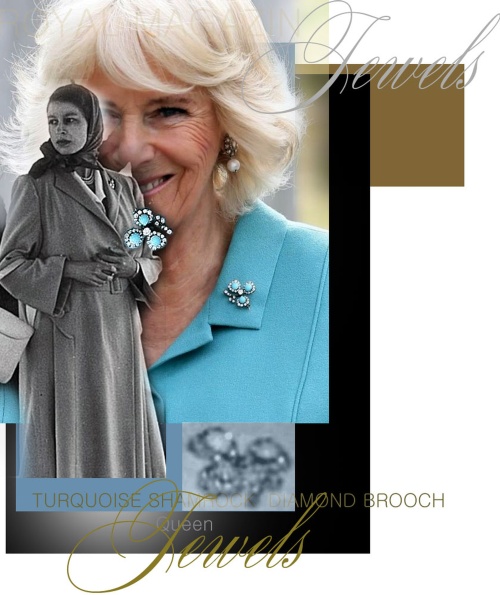
Queen Elisabeth II Turquoise and Diamond Brooch | Wedding Gift of the Dowager Duchess of Portland | Queen’s Brooches
Large Diamond Stomacher with Diamond Fringes Devante de Corsage| Duchess of Connaught Princess of Prussia |Princess Arthur Royal Jewel History
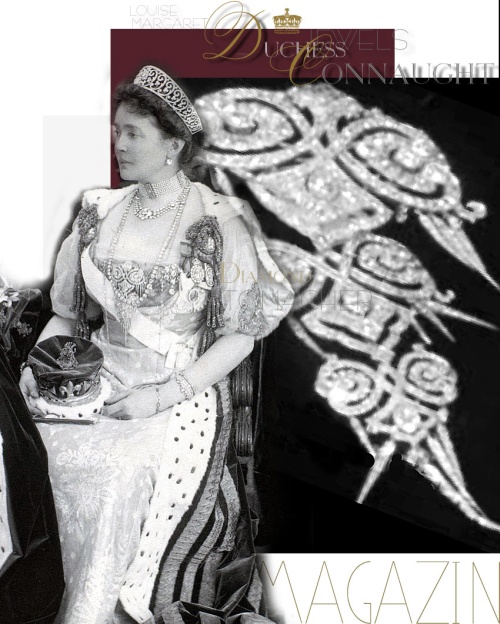
The Duchess of Connaught, the photograph was taken at the Coronation of King George V 1911, 1865-1936.
Large Diamond Stomacher with Diamond Fringes Devante de Corsage| Duchess of Connaught Princess of Prussia |Princess Arthur Royal Jewel History
Queen Alexandra’s wedding gift to Princess Royal Mary | Countess Harewood Lascelles
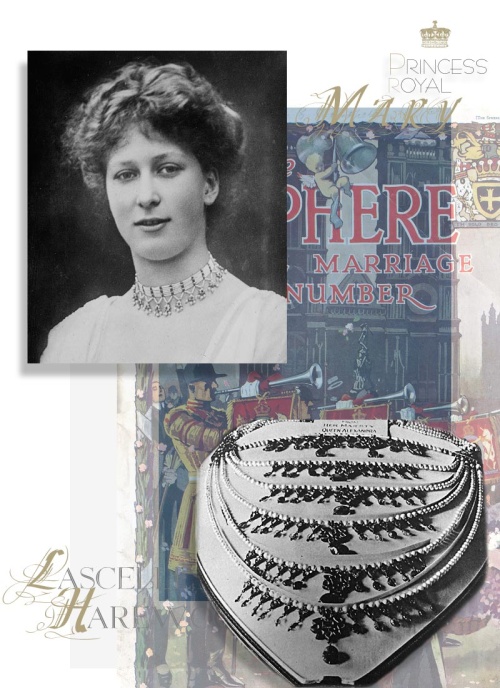

Queen Alexandra’s Aquamarine Cloak Clasp|Faberge Brooch |England Royal Jewel History
A previously undisclosed Fabergé Brooch emerged into public view when Queen Camilla adorned herself with a heritage piece of Queen Alexandra on the 11th of March, in celebration of Commonwealth Day. This remarkable piece revealed two portions of what are three components of a royal Fabergé Cloak Clasp.
The tradition of gifting, particularly for occasions such as birthdays and Easter, saw her receiving numerous presents from her sister, Empress Marie Feodorovna of Russia. The Empress held a particular preference for the exquisite craftsmanship of Fabergé for such esteemed events.
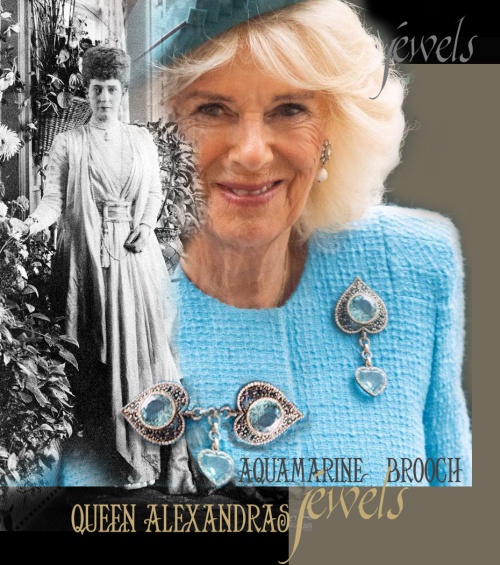
Countess Strathmore Diamond Jewels Marriage Bridal Jewels Wedding Gift in 1881| British Royal Jewels
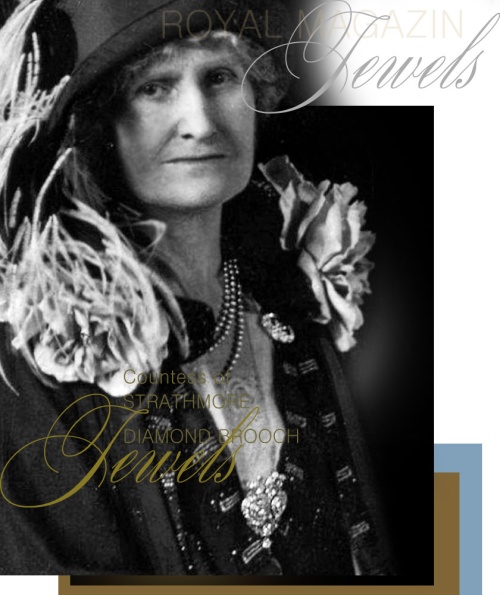
Wedding diamonds from Count Glamis, later Count of Strathmore and Kinghorne, to Cecilia Cavendish-Bentinck- two inwinded hearts in diamonds with a crown as pendant, large brooch, worn on the wedding of the Duke and Duchess of York in 1923 Countess Strathmore Diamond Jewels Marriage Bridal Jewels Wedding Gift in 1881 |



